Whether we like it or not, we rely on the forearm immensely during our everyday lives for cooking, playing with the children, and even using the computer. So having weak forearms can pose a serious problem because a lack of lower arm strength can reduce our ability to function independently.
There’s a multitude of reasons why someone might have weak forearms, such as age-related muscle loss or sporting injuries. So below, you’ll find common symptoms, causes, and treatment options for weakness of the lower arms.
Related posts: forearm hypertrophy guide │how to increase forearm size
Weak forearms symptoms
If you’re experiencing weak forearms and hands, then you might find it difficult to grip objects that would usually be easy to hold onto.
You may also feel pain or throbbing in your lower arm if your weakness is due to an injury.
If you go to the gym, then you might find it harder to hold onto the weights than usual. This could be due to insufficient recovery or a muscle strain, as we’ll soon learn.
What causes weak forearms?
You can suddenly be left with a weak forearm if you suffer an injury. However, there are other reasons for muscle weakness that could be causing your discomfort.
Radial tunnel syndrome
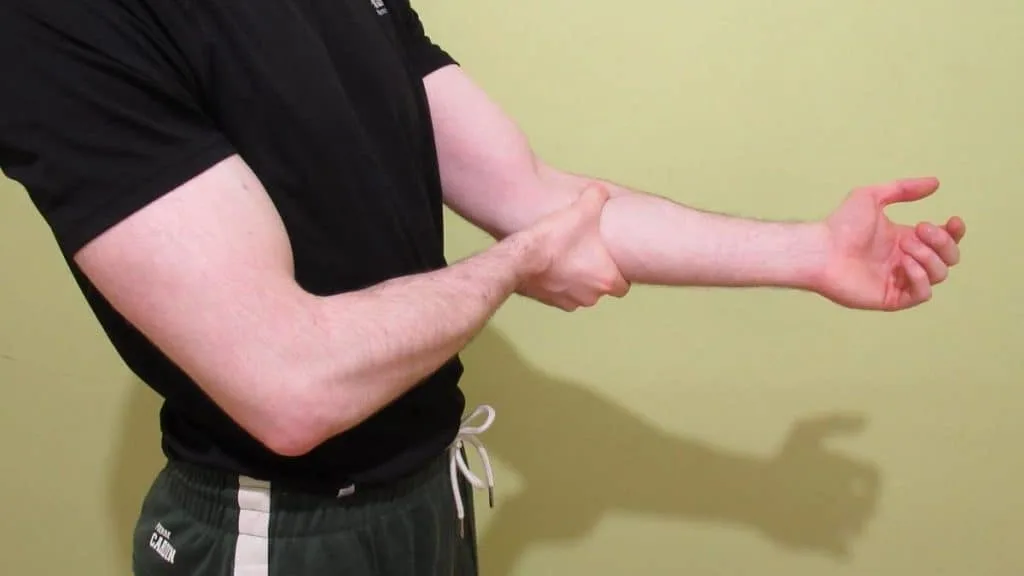
Radial tunnel syndrome occurs when the radial nerve becomes compressed, which research shows can happen in 5 different locations around the elbow and forearm. [1]
Pain in the lower arms, and to a lesser degree around the hand and wrist area, is a common side effect and one which certainly results in weak forearms and wrists.
See Also: Weak triceps
Sarcopenia

Sarcopenia refers to the progressive loss of skeletal muscle mass, a condition that is often worsened through aging and a lack of physical activity. [2] When you look at your forearms before and after in pictures, for example, you can get a good idea of whether or not you’ve lost muscle.
Most people will start to lose muscle as they grow older if they don’t perform resistance training of some kind to keep the muscles active. So if your forearms feel week, it might do you good to perform general strength training to offset some of the age-related muscle loss. Of course, talk to your doctor first to make sure that your body can cope with the exercise.
Muscle strains
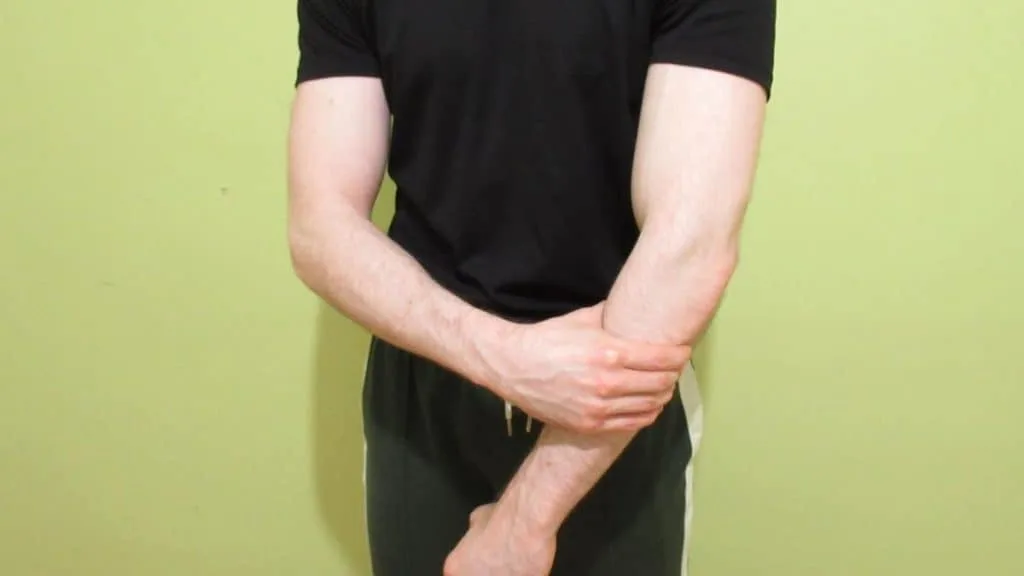
While weight lifting is a safe and effective method (when you use the proper form) for preventing weak forearm muscles, it can also cause sprains if you overexert yourself.
Strains can occur from a lack of recovery, or they can manifest from sudden movements that put your muscles under too much stress.
The Rest, Ice, Compression, and Elevation (RICE) protocol is generally used to treat muscle sprains. As well as resting the affected area, it’s advisable to ice the pain site for 15 minutes every hour during the days after the injury.
You can also wrap a light medical bandage around your forearm to promote blood flow to the damaged tissue and help it heal faster.
Finally, try and keep the affected area elevated above your heart if you think that your muscular weakness is due to an injury. The elevation will help keep the swelling and pain down and speed up your recovery.
Insufficient recovery
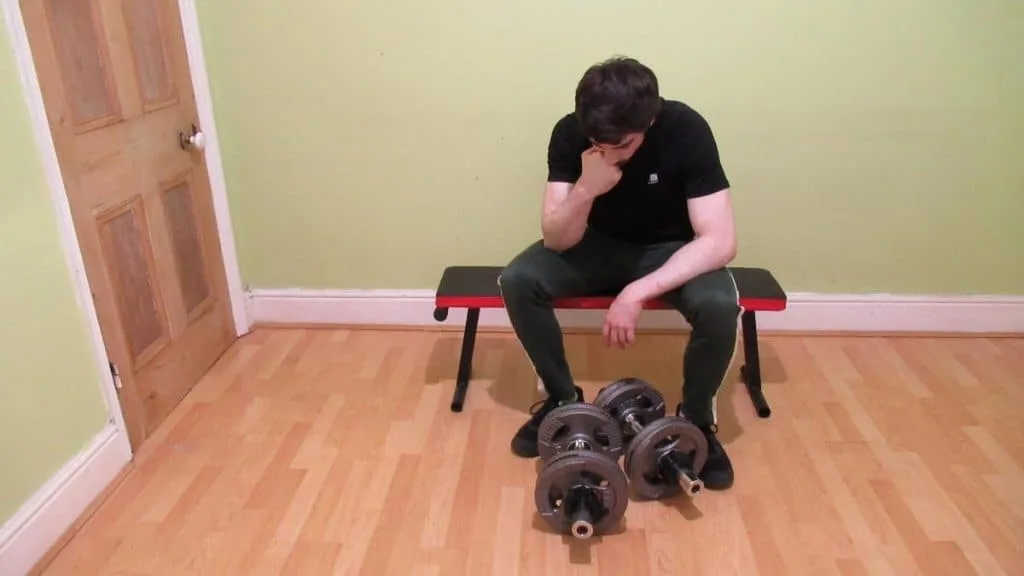
When it comes to resistance training, there are sharp diminishing returns. More is not better, and it takes time for your hard work in the gym to translate into new strength development.
As such, if you train your forearms too frequently, then you may actually find that you’re weaker because you haven’t given them sufficient rest.
It’s best practice to start off with a small amount of training volume—a few weekly sets is fine initially—before adding in extra sets and exercises.
How can you strengthen your weak forearm muscles?
We needn’t all have the most muscular lower arms in the world (or the best forearms in bodybuilding). But having weak forearms can be a real annoyance because it can reduce our quality of life if we can’t grip simple objects without excessive exertion.
Rehabilitation drills
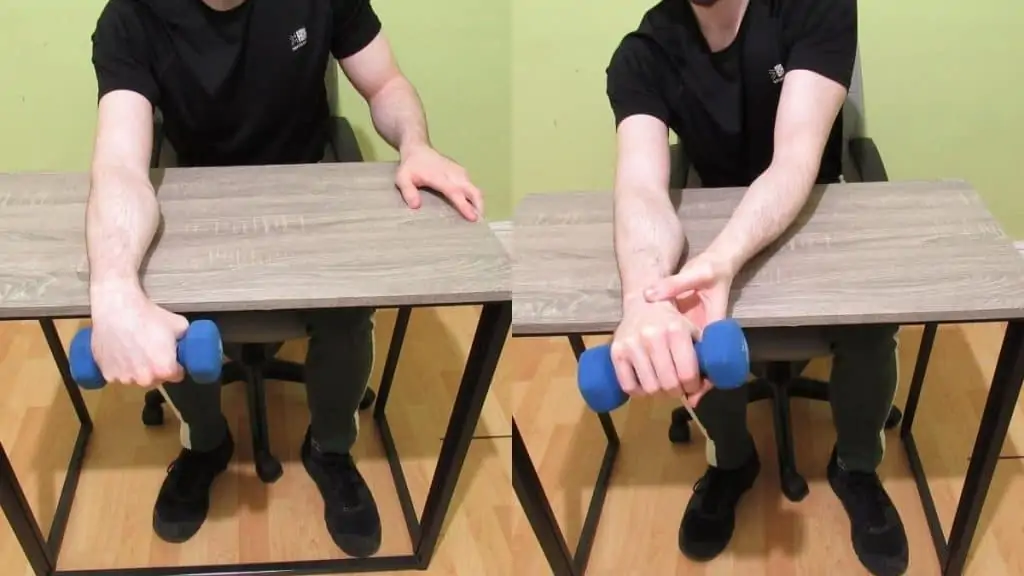
Why are my forearms so skinny and weak? Perhaps you haven’t yet built up sufficient strength after an injury or period of inactivity?
Your physiotherapist may recommend various rehab exercises to get your lower arm strength up to scratch. Usually, these drills focus on learning the correct technique and then progressively adding weight.
They may also recommend doing blood flow restriction training for forearms because it enables you to build strength while lifting very light weights.
Resistance training
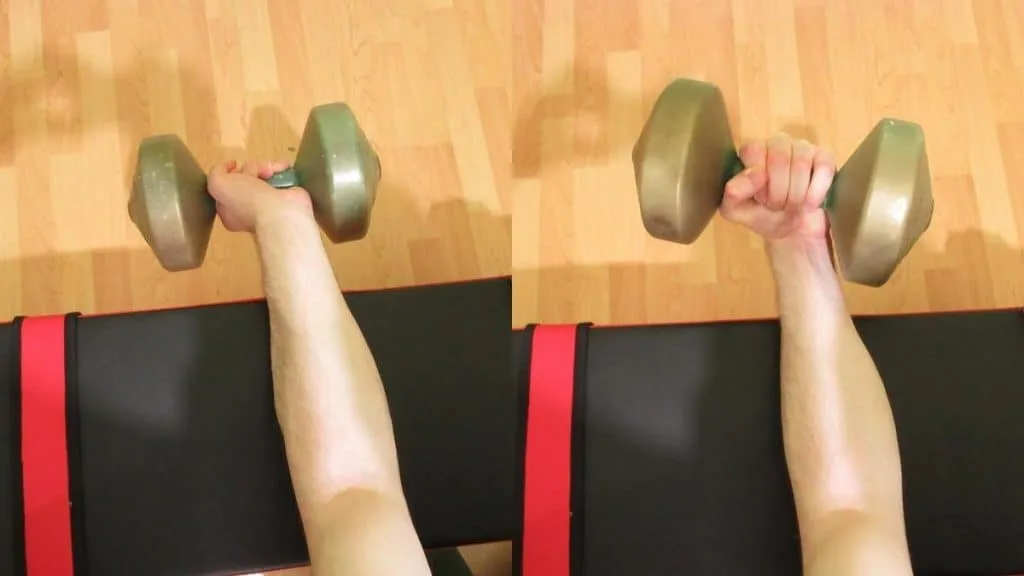
Resistance training is the most effective method for strengthening your lower arms because you can isolate the forearms and make sure that they get the attention they need to get stronger.
Wrist curls, where you hang your hand over a weight bench/table and then lower the weights down and back up, are particularly effective. You can do the regular version to work your forearm flexors or the reverse variant, where you rest the underside of your forearm on the bench/table to strengthen your forearms extensors.
If you want those Popeye forearms, then you definitely need to lift weights to increase the muscle mass of your lower arms. Of course, you can have strong and functional forearms without them actually being overly large.
Stretching

Stretching may not seem like the obvious weak forearm solution, but actually, if your lower arms are tight (which can make them feel weak), then they’ll naturally have less capacity to contract without cramping up.
To stretch the underside of your forearm, raise one arm out in front of you and lock your elbow out. Then raise your hand up so that your palm is facing away from your body. Use your opposite hand to apply a gentle stretch to your working arm by gently pulling your fingers back. Hold this position for 15-30 seconds.
If you feel weakness in the top of your forearms, then you can do this exercise in reverse. Again raise your arm out in front of you. But this time, you’re going to put your hand down so that your palm is facing toward you. Then, gently pull your fingertips toward your body and hold the position for 15-30 seconds.
Read more: big biceps and small forearms │bigger forearms than biceps
Conclusion: Getting rid of weak forearms
As we’ve learned, weak forearm muscles can occur from a variety of causes. Some people may have simply done too much weight lifting, while others may have a more serious condition that requires a more specialized treatment protocol.
Having weak forearms isn’t something that you should ignore unless, of course, you mean that your forearms are strong, but they’re simply lagging in comparison to your other body parts.
Having genuine muscle weakness can be debilitating. So I recommend using the information in this article to strengthen your lower arms under the supervision of a medical professional who can guide you through a personalized treatment plan.
References
- Moradi, A., Ebrahimzadeh, M. H., & Jupiter, J. B. (2015). Radial Tunnel Syndrome, Diagnostic and Treatment Dilemma. The Archives of Bone and Joint Surgery, 3(3), 156–162. https://www.ncbi.nlm.nih.gov/pmc/articles/PMC4507067/
- Santilli, V. (2014). Clinical definition of sarcopenia. Clinical Cases in Mineral and Bone Metabolism, 177–180. https://doi.org/10.11138/ccmbm/2014.11.3.177

